
Tesla's Master Plan 4.0: From Electric Vehicles to Humanoid Robots!


Produced by Zhineng Auto
The Master Plan has always been Elon Musk's "narrative tool" at Tesla:
The 2006 Master Plan 1.0 made people believe for the first time that electric vehicles could not only run but also run fast;
The 2016 Master Plan 2.0 made energy and autonomous driving the dual driving forces of Tesla;
The 2023 Master Plan 3.0 used energy transition to build Tesla's entire logic.
The now not-so-high-profile Master Plan 4.0 has completely stripped Tesla of its "automobile company" facade, positioning artificial intelligence and robotics as the core logic for 80% of the company's future valuation, with 80% of the company's value expected to come from the humanoid robot Optimus.
According to the Pareto Principle, the automotive business has become a foundation for robotics, an unprecedented blueprint; but for peers following Tesla in car manufacturing, you're leaving just like that, should I follow you on this adventure?
Behind this grand vision lies the reality of declining competitiveness and consecutive sales drops for Tesla's electric vehicles. In the European market in 2025, the U.S. domestic market after October, and even in China, after Tesla's shallow retreat, what's the next step? Do we follow?
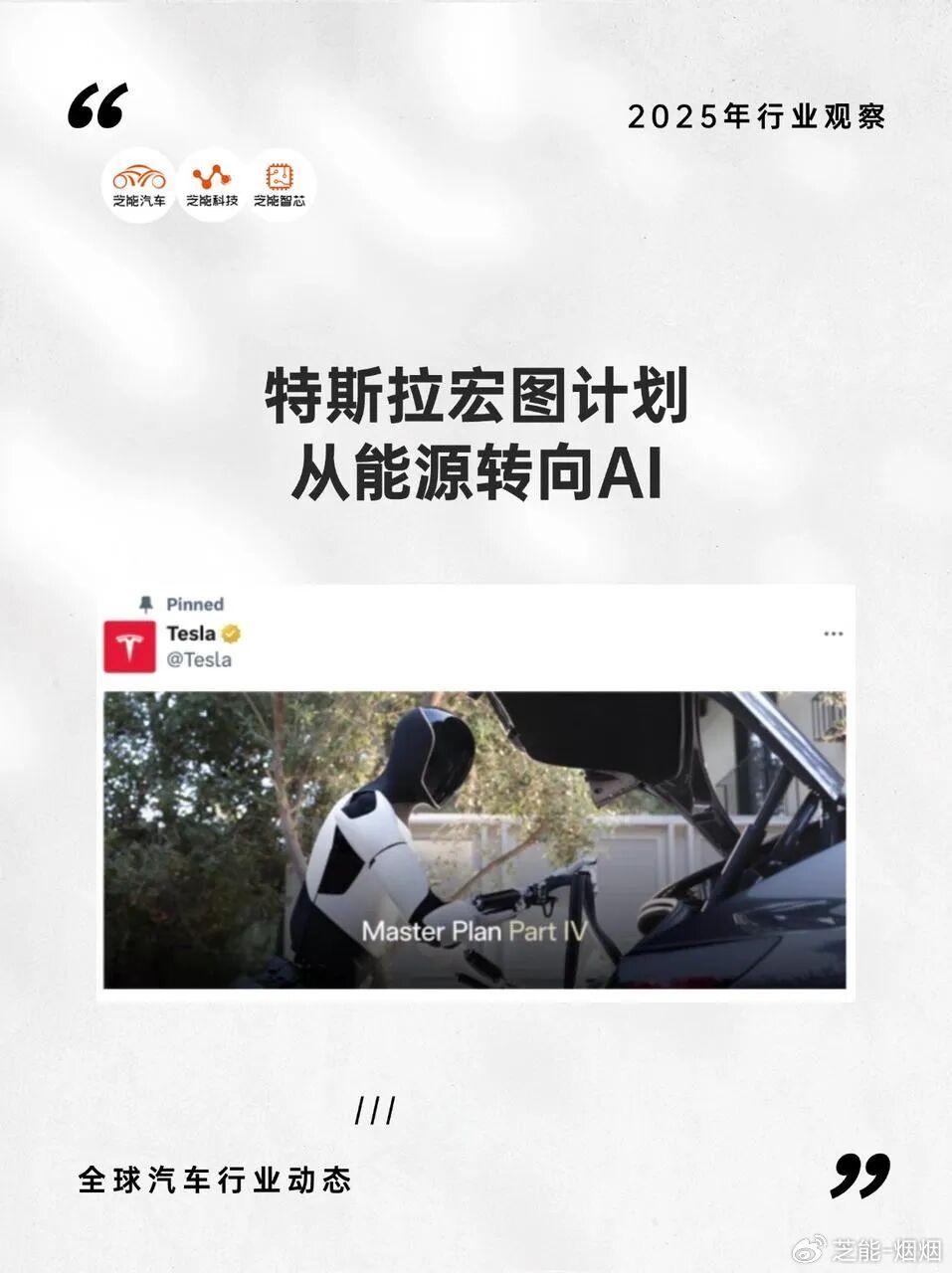

Part 1
Tesla's Master Plan 4.0
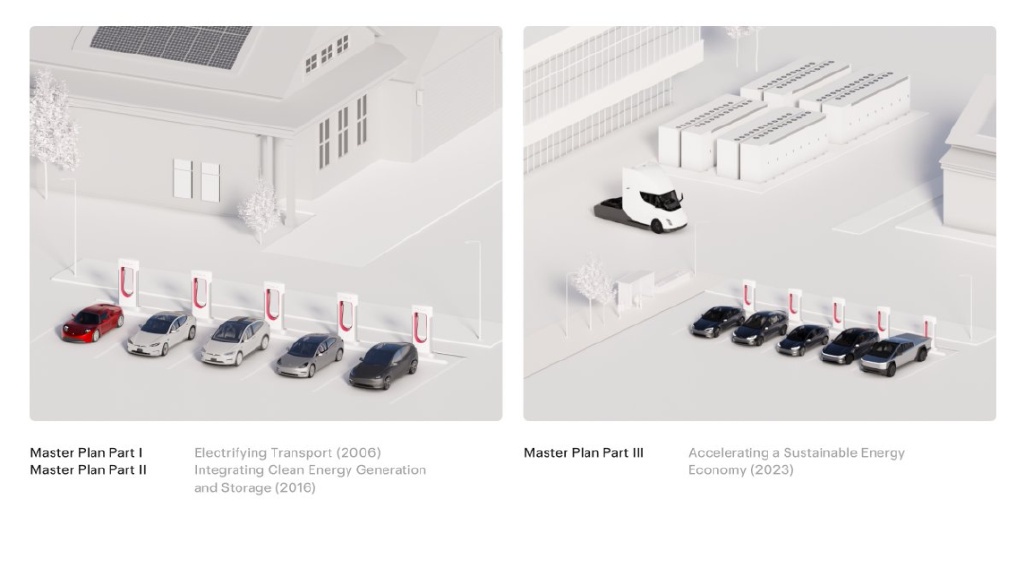
Tesla's development over the past two decades can be seen as a phased narrative centered around the "Master Plan."
◎ The 2006 Master Plan 1.0 established the product and commercial path for electric vehicles;
◎ The 2016 Master Plan 2.0 emphasized energy ecosystems and autonomous driving; the 2023 Master Plan 3.0 expanded to a vision of global energy transition.
◎ The current Master Plan 4.0 shifts its core to artificial intelligence and robotics, with such a significant strategic adjustment that it's surprising but not unexpected.
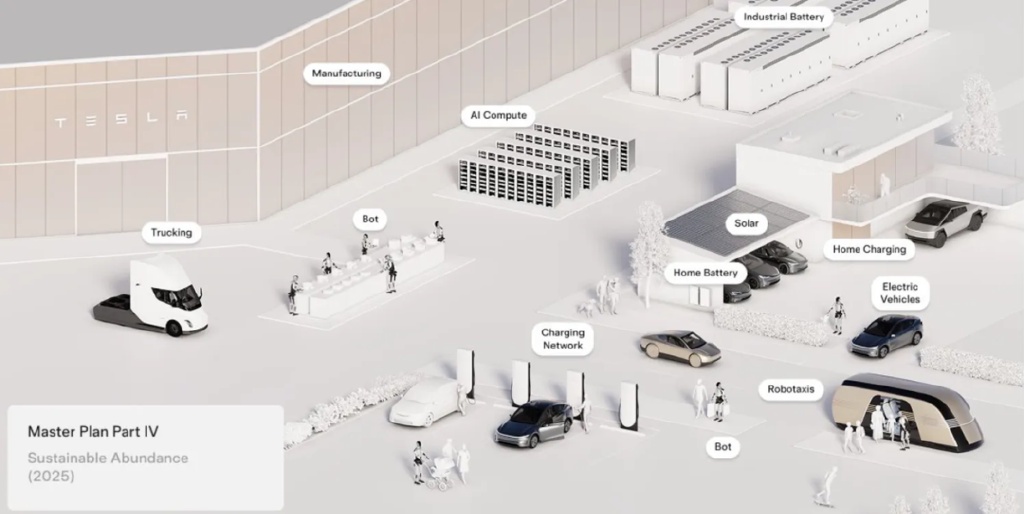
Master Plan 4.0 revolves around five principles: growth is infinite, innovation removes limitations, technology solves real-world problems, automation must benefit all humanity, and widespread adoption leads to greater growth.
When these are combined with Tesla's past plans and current business status, several key logics emerge.
◎ Master Plan 4.0 builds on Tesla's accumulated expertise in autonomous driving and artificial intelligence.The FSD system has been iterated for years, with technical capabilities and data accumulation leading the industry. The Robotaxi pilot service launched in Austin, Texas, aims to expand to the San Francisco Bay Area and eventually cover half of the U.S. population, which is a part we can see.
◎ The humanoid robot Optimus is at the center of Tesla's strategy. Elon expects robots to achieve an annual production of 1 million units within five years and become the primary source of the company's future value. If this 80% materializes, Tesla will have nothing to do with being an "automobile manufacturing company," regardless of how many Tesla electric vehicles are sold this year, the decline in Europe, or the potential cliff-like drop in the U.S. after October—none of it matters.
In fact, the mass-market affordable electric vehicle promised in 1.0(which Chinese automakers have achieved)has never truly materialized, FSD remains at L2 level, and the comprehensive energy transition depicted in 3.0—well, these things aren't that great.
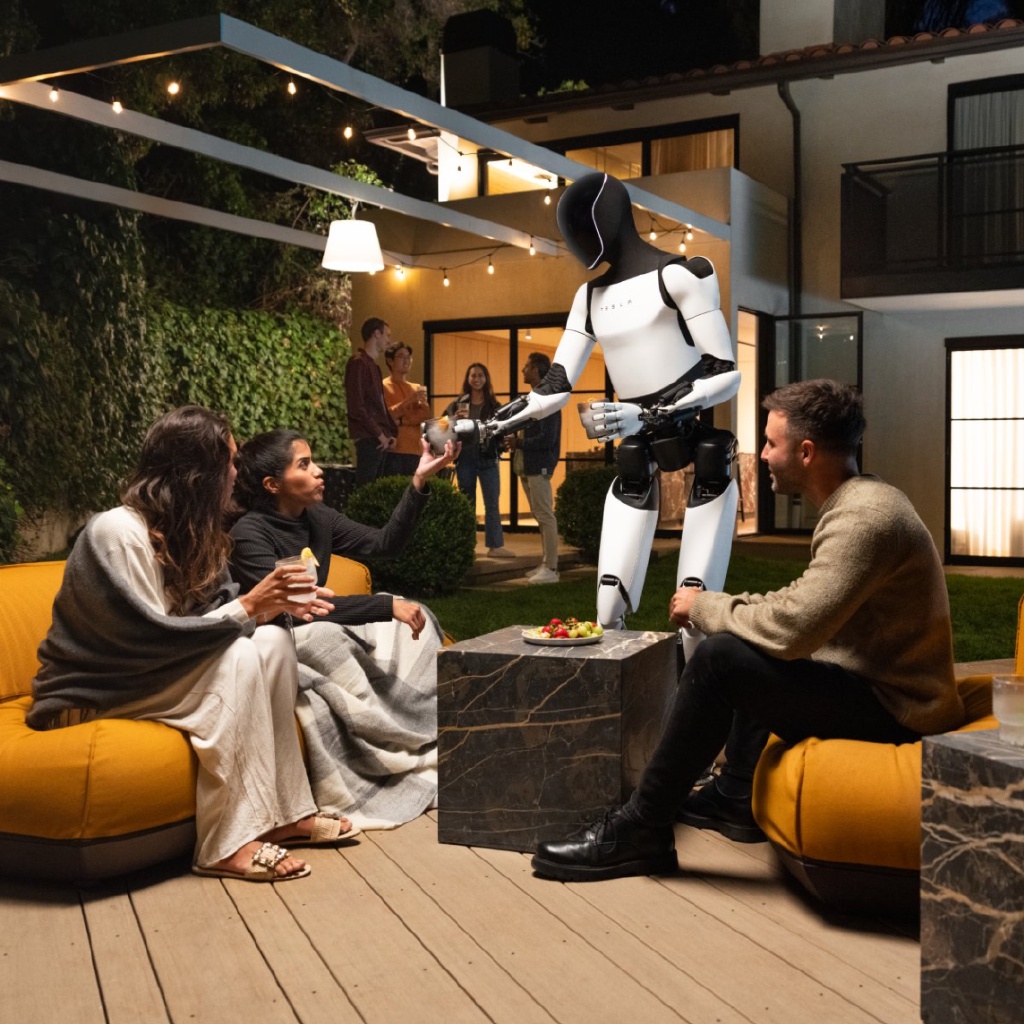
Under Elon Musk's leadership, Tesla, as his tool, has indeed driven the popularization of electric vehicles and industrial upgrades. The mass production and cost reduction of Model 3/Y have pointed the way for the global development of electric vehicles, but by 2025, Elon seems less interested in cars.
Currently, Elon's focus is on robotics and AI, which can also be understood as his intention to use Tesla to open up new growth avenues in AI and robotics.
The key question is whether autonomous driving can truly achieve large-scale commercial implementation and whether humanoid robots can achieve breakthroughs in technology, cost, and demand.

Part 2
America's All-in Strategy on AI
We can also see that now, whether it's tech giants or Elon, the focus is on AI, so the keyword of Tesla's Master Plan 4.0 is artificial intelligence.
The progress of AI is most evident in the continuous enhancement of perception and decision-making systems, with large models rapidly improving their applicability in general scenarios.
Taking autonomous driving as an example, over the past decade, AI has made significant progress in image recognition, sensor fusion, path planning, and other areas. Today's vehicles can achieve high-level assisted driving on highways, urban roads, and even some complex road conditions.
From "usable" to "user-friendly," we also see the direction of development.
◎ The system structure is simple, facilitating iteration and reducing failure risks.
◎ Lateral and longitudinal control is natural, reducing user distrust.
◎ Data accumulation from large-scale implementation continuously improves the experience.
The highly anticipated direction is humanoid robots.
AI development enables robots not only to perform mechanical repetitive actions but also to execute complex tasks through visual recognition, language understanding, and environmental perception.
◎ On factory assembly lines, robots can flexibly adjust based on the position of different parts;
◎ In home scenarios, they can assist with moving items or even provide simple companionship.
Physical AI applications are still in their early stages but hold immense potential, and it's not just Elon telling this story—NVIDIA's Jensen Huang is also focusing on robotics.
Thus, the core of this Master Plan is Tesla's Optimus, aiming to bring this technology to market on a large scale.
From Tesla's perspective, if FSD and Optimus can overcome technical and cost barriers, they could become highly differentiated competitive advantages.
Tesla has essentially, along with xAI, engaged in systematic competition with companies like Google, OpenAI, Microsoft, and NVIDIA in the tech dimension. The value of AI lies not only in a single product—whether it's winner-takes-all remains to be seen—so while autonomous Robotaxis are separate from car manufacturing, they are highly relevant to Elon's vision for robotics. Robots aren't just hardware; as they mature, they could trigger significant changes in labor markets and social structures in Europe and the U.S.
The so-called "growth is infinite" in Master Plan 4.0 means AI can continuously create new application scenarios and demands, breaking through the ceilings of traditional industries.
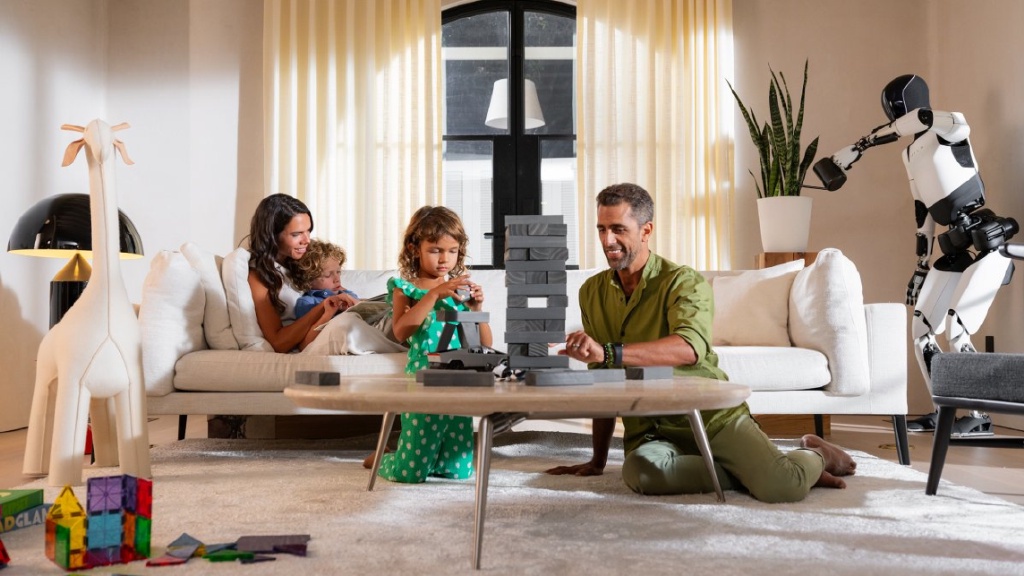
In short, you can't prove Elon wrong; you can only spend more time tracking his claims.
Summary
Tesla's Master Plan 4.0 continues the consistent narrative logic—first painting the future, then asking if you believe in Elon Musk, using time and capital to chase it. This time, the leap is bigger than ever, and humanoid robots and AI are also a bit much for this company.
If autonomous driving can truly achieve large-scale implementation, and if Optimus can enter factories and homes at an affordable cost, Tesla could become an "AI-driven hardware company." We'll keep watching.
The copyright of this article belongs to the original author/organization.
The views expressed herein are solely those of the author and do not reflect the stance of the platform. The content is intended for investment reference purposes only and shall not be considered as investment advice. Please contact us if you have any questions or suggestions regarding the content services provided by the platform.

